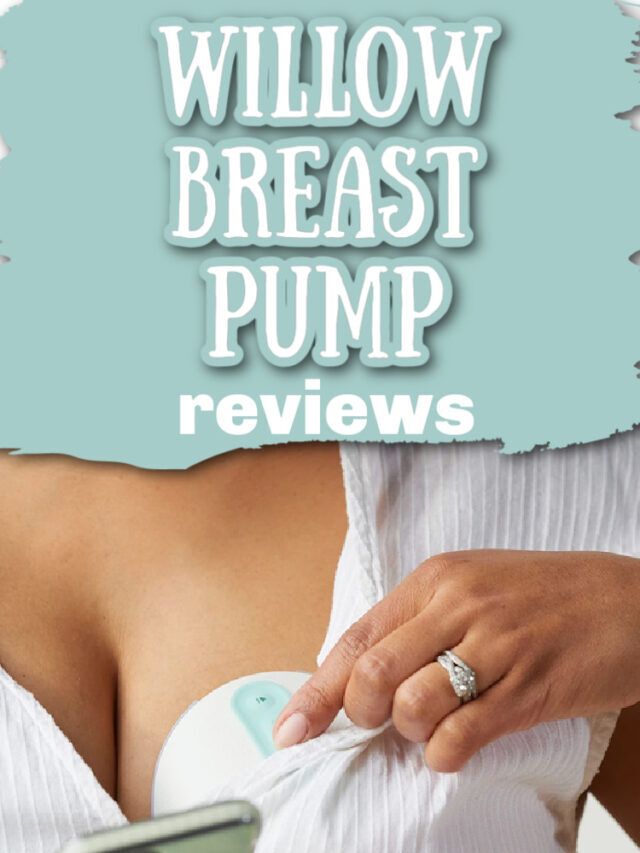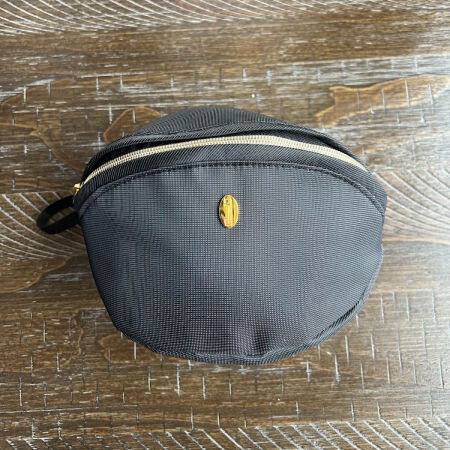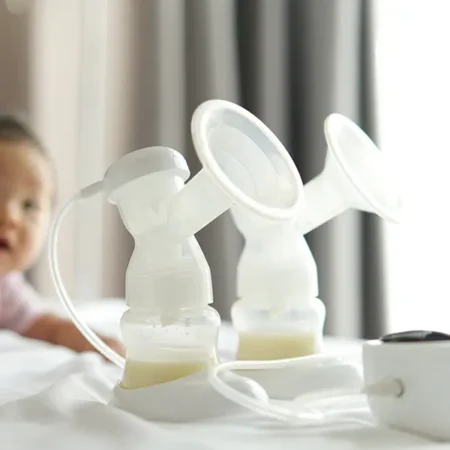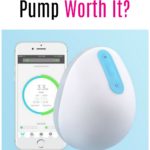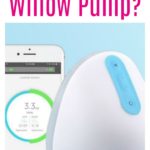Being able to pump and do pretty much whatever I wanted at the same time – clean the house, commute, even take a nap – is something I only dreamed about when I was exclusively pumping. The Willow 3.0 pump is a wireless pump that frees you up to pump whenever and wherever you’d like – here’s a complete Willow pump review.
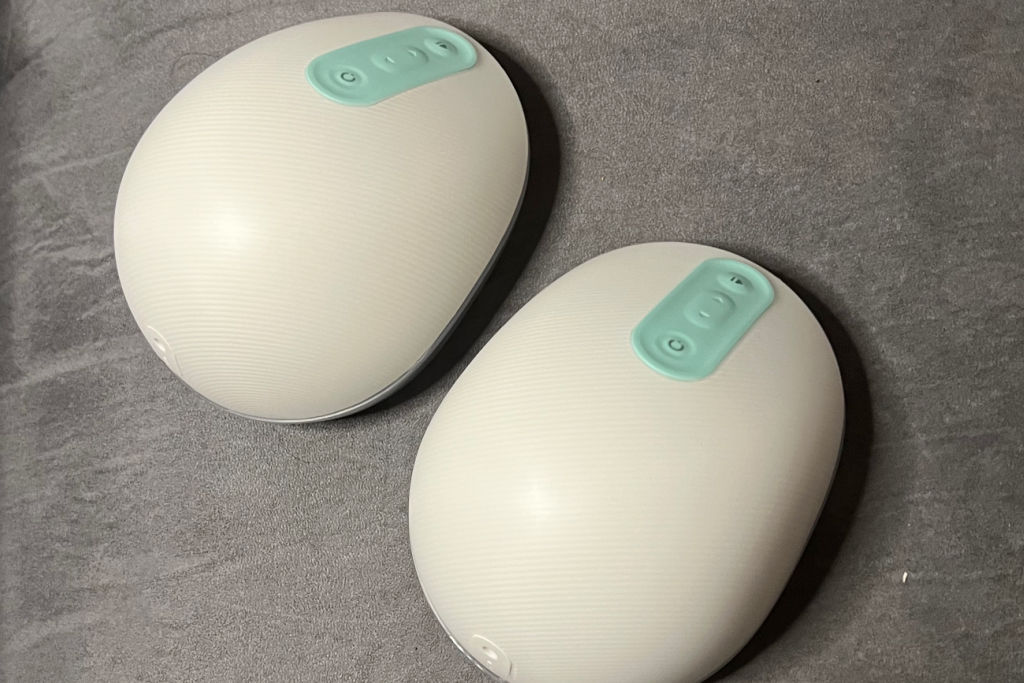
This post may contain affiliate links, which means if you click a link and purchase something, I may make a small commission at no additional cost to you. I only recommend products I love! More information here.
Note: Willow has two breast pumps – the Willow 3.0 and the Willow Go. This post discusses the Willow 3.0, but you can read more about the Willow Go here and see a comparison of the two pump here.)
What is the Willow Pump?
The Willow 3.0 is a wireless breast pump that allows you to easily move around and do other things while you pump.
Essentially, it’s two breast pumps – one for each side – that you place inside your bra, position to “latch,” and turn on.
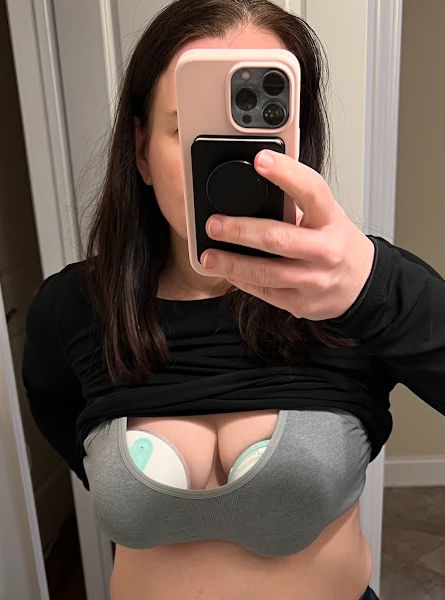
The milk goes into a bag or reusable container stored within the Willow pump, rather than into bottles.
The pump connects with an app on your phone, and you can use the app to turn the pump on and off and adjust the suction. You can also see how long you’ve been pumping and how much milk you’ve gotten.
How is the Willow 3.0 different from other pumps?
The Willow 3.0 is a high-end hands-free breast pump.
Not only are you always pumping hands-free (and you don’t need to get a separate pumping bra to do it), but there is no tubing that you have to connect to a pump, and there are no bottles hanging off of the front of your chest. The pumps just go into your bra.
Examples of other wireless pumps include the Elvie, the Willow Go, the Momcozy, and more. You can see a more detailed comparison here.
What are the advantages of the Willow 3.0 breast pump?
Some of the pros of using a Willow include:
1. Mobility
Obviously, the biggest advantage is that you can easily move around and do anything while you pump – make dinner, take care of your baby, work, etc.
2. Spill-proof
Willow has the option to pump into spill-proof bags, which means you can lie down or bend over while pumping.
Willow is the only hands-free pump with this as an option.
3. App and smart watch integration
The app allows you to see how much you’re pumping in real-time, plus it tracks your pumping time and amounts for you.
It also can connect to an Apple Watch, allowing you to see how much you’ve pumped and control the pump without carrying your phone around.
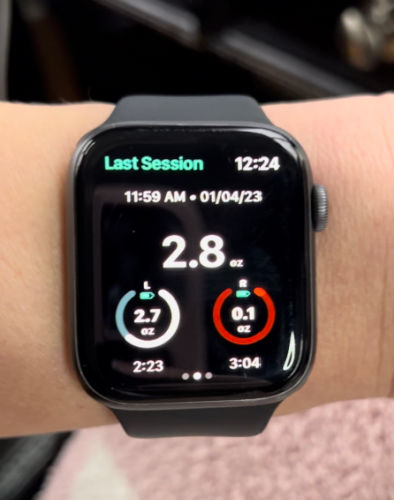
4. Suction can be customized on each side
You have the ability to set the suction for each side to different levels.
If you need stronger suction on one side and gentler on the other, the Willow is one of the few pumps where this is possible.
5. Noise level
It’s quieter than most pumps, though it’s not silent.
6. Pump parts are easy to clean
There are only two parts that need to be cleaned – the flange and the flextube. (If you’re pumping into Willow’s reusable container, that would be a third piece.)
What are the disadvantages of the Willow 3.0 breast pump?
There are a few cons to think about:
1. Learning curve
It can take some people a little time to get used to the Willow, because the suction works a little differently than other pumps. Most breast pumps use a “tug and release” suction; the Willow 3.0 uses “continuous latch.”
Also, some people like to switch back into stimulation/letdown mode after their milk stops flowing in order to get another letdown. It’s not possible to switch back to letdown mode with the Willow.
2. Nipple alignment
It can be difficult to correctly align your nipple, because you can’t see it under the pump.
3. Oversuppliers may need to switch bag/container during sessions
If you have a big supply and generally pump more than 4 oz per side, you will need to stop pumping and switch out the container/bag in the middle of the session.
The pump will automatically stop when the pump senses that it’s full.
4. Cost of spill-proof bags
If you choose to use the spill-proof bags, the cost can add up.
The biggest issue for many people, though, is the price of the breast pump.
Is the Willow pump worth it?
This is such a personal question, because so much depends on your budget and your life circumstances.
For example, if you don’t have a lot of extra money and will only need to pump at work, where you’ll be in a lactation room with an outlet, I would say no.
However, if you have a larger budget and need to pump multiple times per day on the go, then yes, it can definitely be worth it.
There are a few options to make the Willow more affordable:
- Aeroflow Breastpumps stocks the Willow, and you may be able to get it at a discounted price through them. If you haven’t gotten your pump through insurance yet, fill out the linked form and see if you can get one at a discount.
- If you have an FSA or HSA, you can use that to pay for the pump.
- You may also be able to get reimbursement through insurance if yours covers out-of-network pumps.
Here are some additional thoughts from people who have used it (from my instagram stories):
Can you use the Willow 3.0 as your primary pump?
It depends on how you plan to use it. Some people notice that their output is lower with wearable pumps.
If you are exclusively pumping, or pumping at work, I would suggest also getting a traditional pump and using the Willow as a mobile pump. If you find your output is comparable, then you can use whichever pump you prefer.
On the other hand, if you are pumping for occasional separations, like date nights, a wearable pump will work fine as a primary pump.
Will the Willow pump work for everyone?
No, not everyone. One thing to be concerned about is nipple size.
Willow suggests using their app to determine your flange size. Willow sells three flange sizes – 21mm, 24mm, and 27mm. They also have inserts that will fit sizes 15mm, 17mm, and 19mm.
Basically – if you can use a 27mm breast shield or smaller, you should be able to use the Willow.
Some of the comments below have more info on sizing from Willow users that might be helpful for you.
Does the Willow work with small breasts? Large breasts?
Yes. Nipple size, rather than breast size, is what can be the issue.
Should you buy the reusable container?
You also need to purchase bags and/or a separate reusable container:
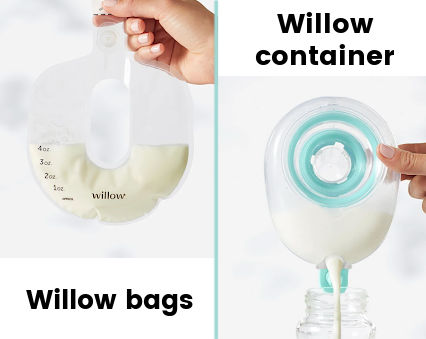
The bags are spill-proof, but the reusable container will leak if you bend over.
Because the cost of bags adds up, if you’re planning on pumping frequently, I would suggest buying the container.
The pump comes with some bags you can try out for when you want to lie down while pumping or if you are in a situation where you don’t want to deal with the container.
Will others be able to tell that you’re pumping with a Willow?
The Willow can be worn out of the house without being obvious.
One mom in our Facebook group has a Willow, Elvie, and a Freemie, and took photos of herself without a pump and then with each of them. You can see how they compare below:
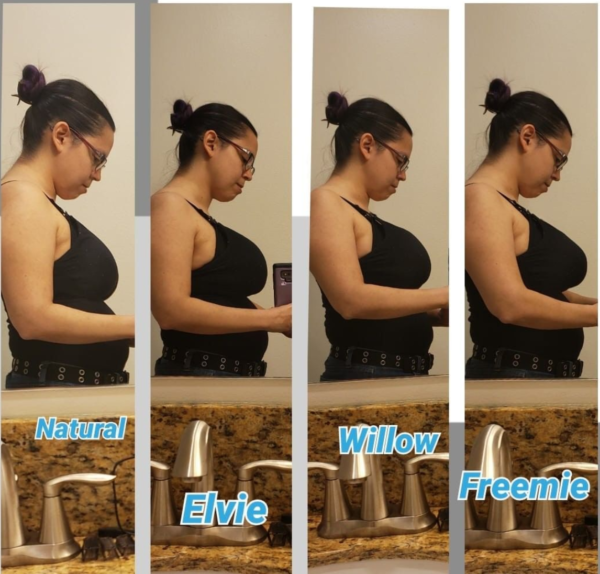
Do you need a special bra to pump with the Willow?
No, any stretchy nursing bra will work. Some people find that if they wear a darker bra, the output shown in the app is more accurate.
Willow recommends not using padded or underwire bras with the pump.
Keeping your Willow safe
If you decide to get a Willow, you might also want to look into getting a wearable breast pump case to keep it safe. Here are a few different options:
Wearable Breast Pump Cases
What’s the bottom line?
I think the Willow 3.0 is an awesome pump, and the ability to pump into a spill-proof bags (making it possible to move completely freely) is a great feature.
Hopefully this Willow breast pump review helps you make your decision. Let me know if you have any questions in the comments – and check out the Willow breastfeeding kit too!
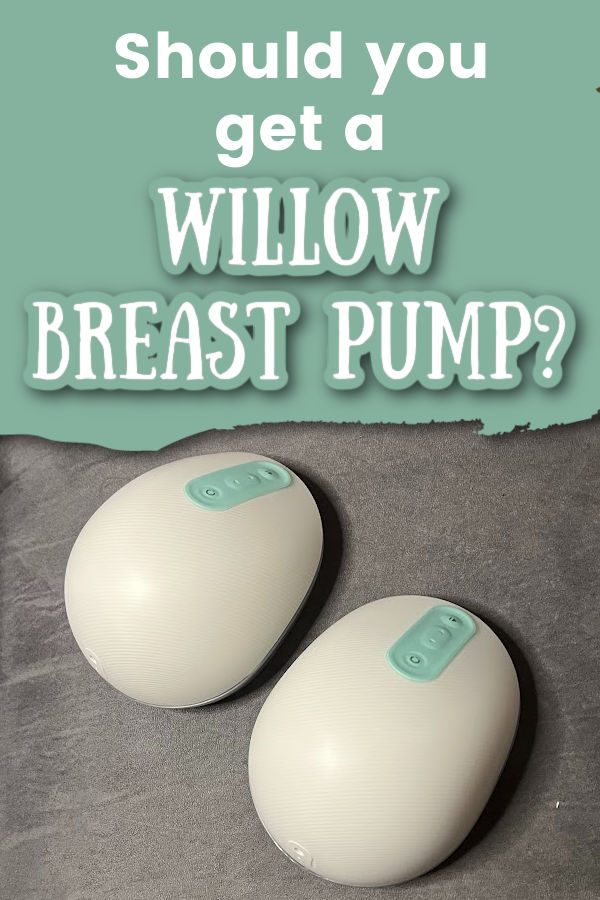
References
- Heathcare.gov. “Using a Flexible Spending Account (FSA).” https://www.healthcare.gov/have-job-based-coverage/flexible-spending-accounts/
- HSA Center. “What is an HSA?” https://www.hsacenter.com/what-is-an-hsa/
